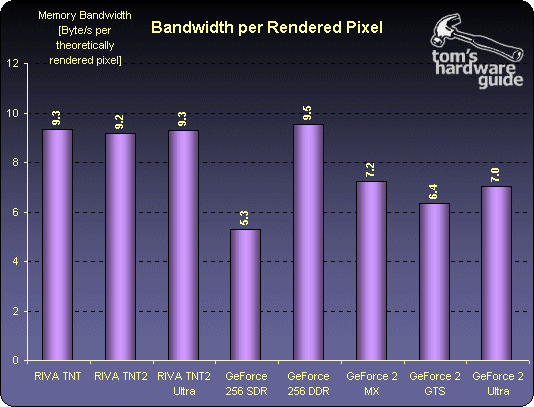NVIDIA Strikes Back - The GeForce2 Ultra 3D Monster
A Look Back In History, Continued
The next thing I did was to simply divide the available memory bandwidth of each card by its pixel or texel fill rate. The result is interesting.
With the exception of GeForce256 SDR the ratio stayed the same until GeForce256 DDR. It's no miracle why the GeForce256 SDR was such a modest performer, because its memory slowed the GeForce chip down immensely. Things went downhill with the GeForce2 GTS, GeForce2 MX is not quite so bad and the now to-be-released GeForce2 Ultra is still suffering from a bandwidth of only 7 Bytes per second for each 'to-be-rendered' pixel.
Things seem even worse if you look at the bandwidth per texel. However, this is not as much of an issue, as we will see later. The architecture of the modern GeForce chips doesn't require as much bandwidth per texel anymore. Still, the GeForce2 GTS has got the worst ratio.
Get Tom's Hardware's best news and in-depth reviews, straight to your inbox.
Current page: A Look Back In History, Continued
Prev Page Introduction Next Page A Look Back In History, Continued
